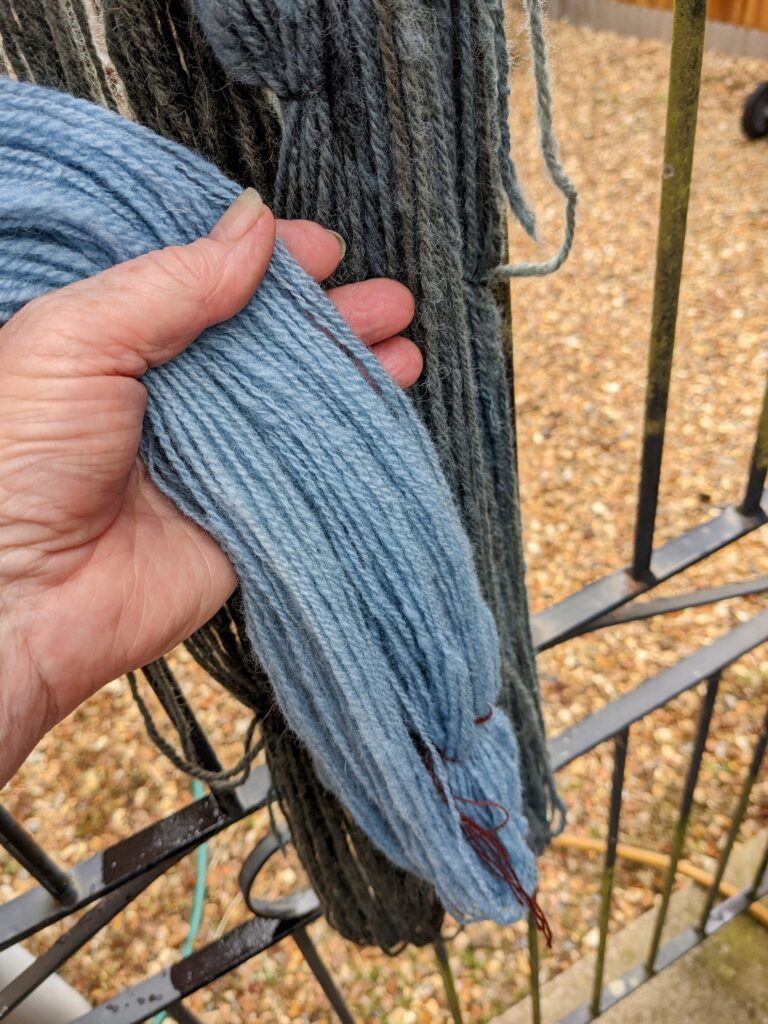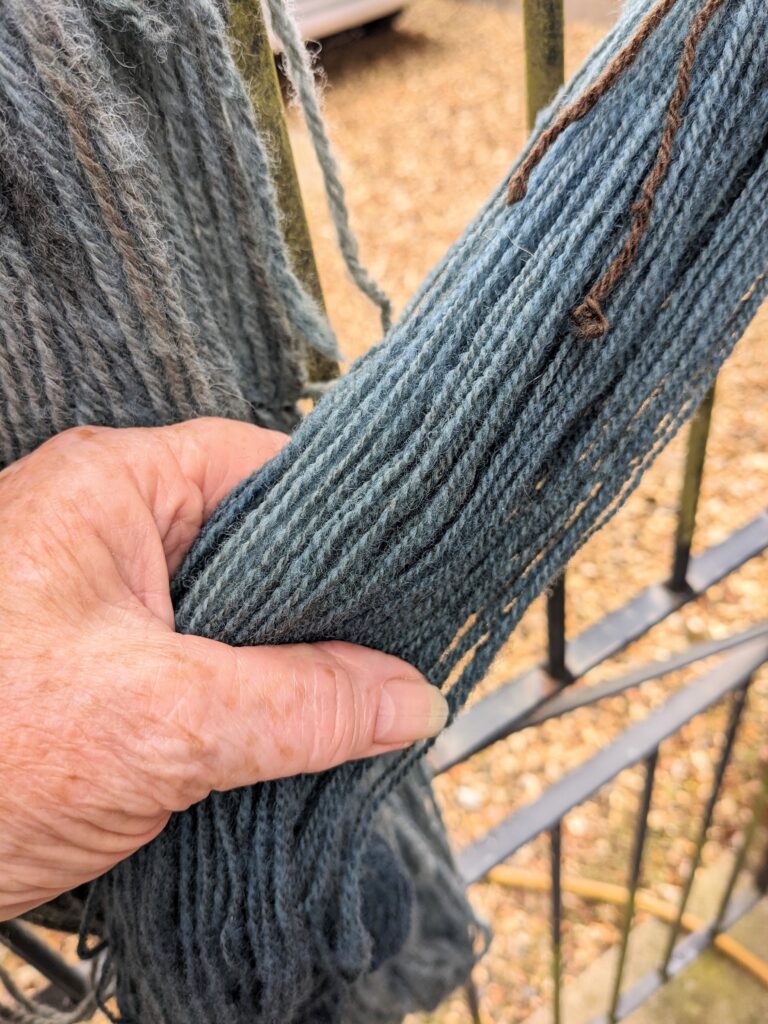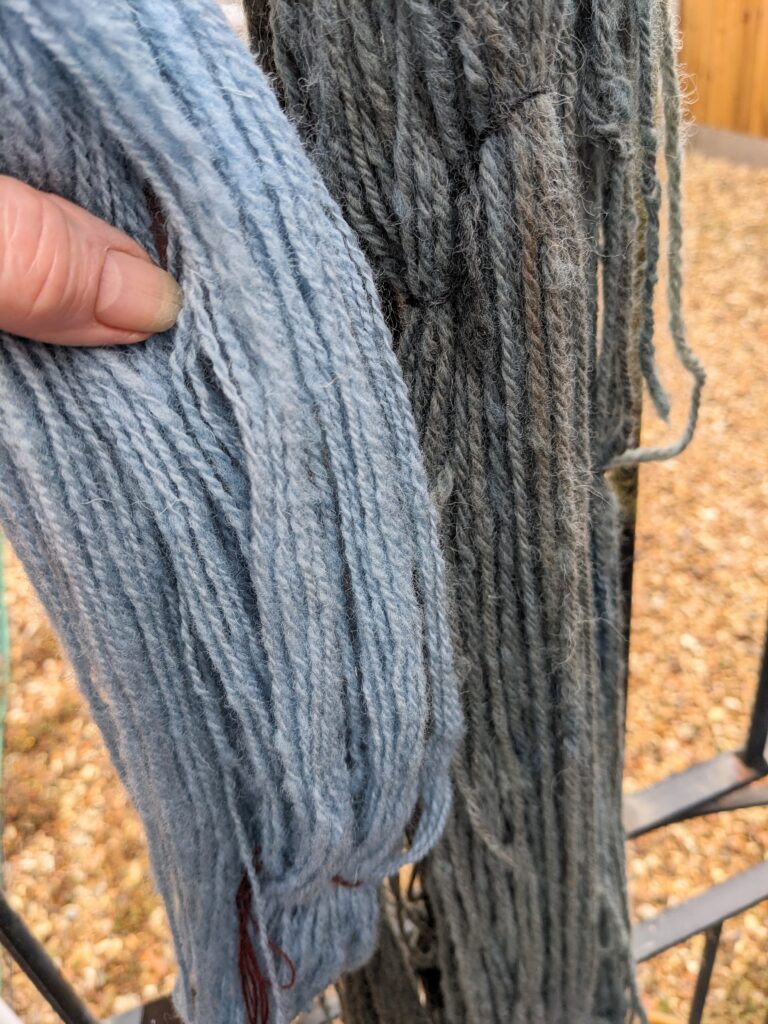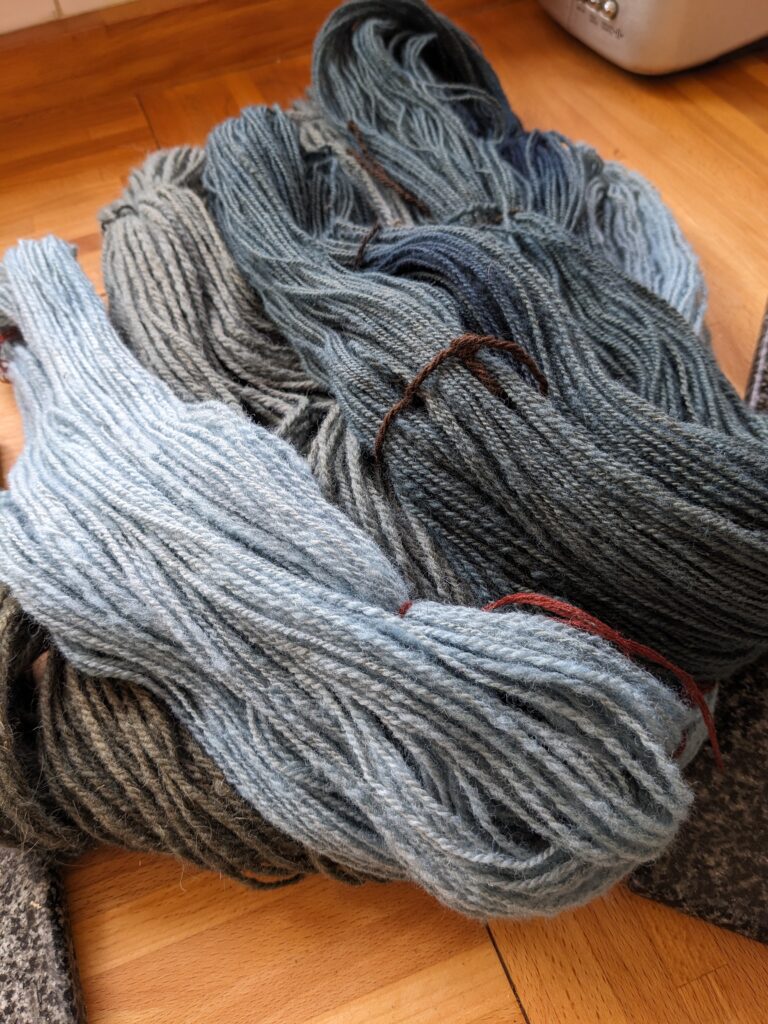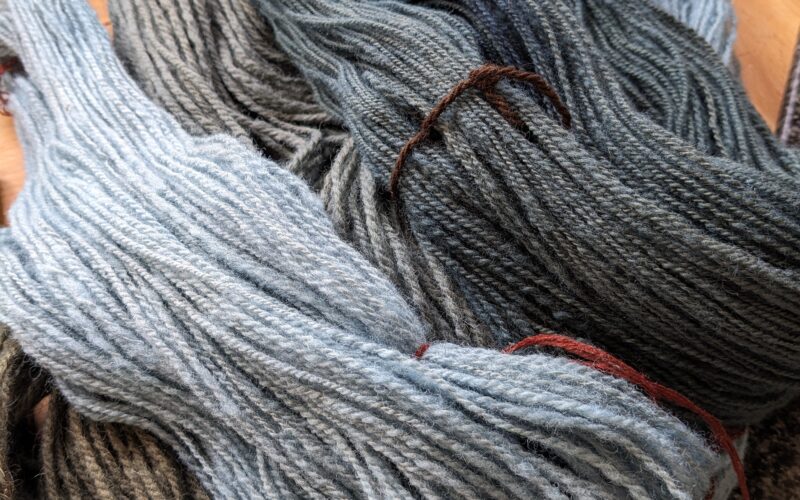After watching Michael Garcia’s video on using dried Persicaria tinctoria leaves to dye with I thought I would give it a go. I have been harvesting my patch quite regularly and drying the leaves in a dehydrator. This seemed to be the easiest and quickest way to preserve them for future use. I don’t always have the time to extract the pigment, or indeed, enough leaves (although now the weather has finally warmed and with the amount of rainfall, this has recently changed!) It also seemed to be a relatively easy way to demonstrate indigo dyeing when I’m set up in my Saxon encampment with little equipment to hand and no fresh leaves.
When an expert demonstrates a method……it looks easy! This was no exception. He quite clearly demonstrates the difference between two indigo bearing plants, Persicaria and Indigofera tinctoria. Indigofera being the most suited to the dry leaf method as when it dries, the leaves do not convert the indigo within them making it soluble in water and easy to release. Persicara requires a bit more processing as the dried leaves lock the indigo within them and it is NOT soluble in water. He explains it far better than I in the video and it has led me to buy some Indigofera seeds to grow on and try them out. I’m hoping they will prove an easier crop than the Persicaria. If nothing else, if I can get them to maturity, they will produce a larger quantity of indigo pigment.
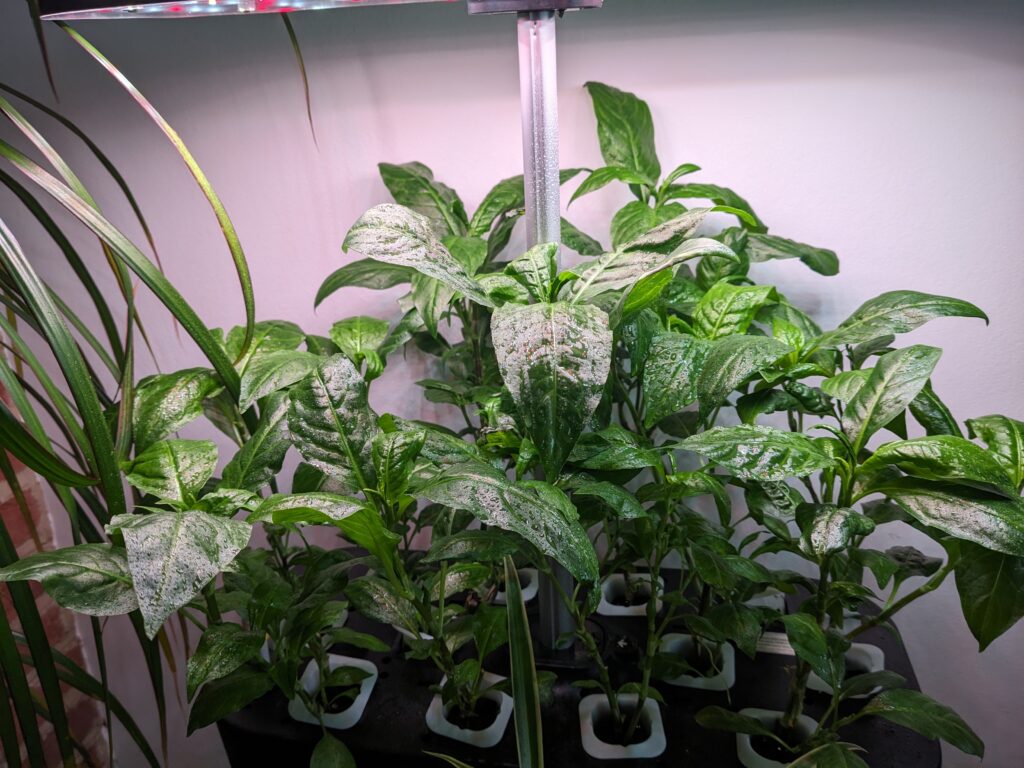

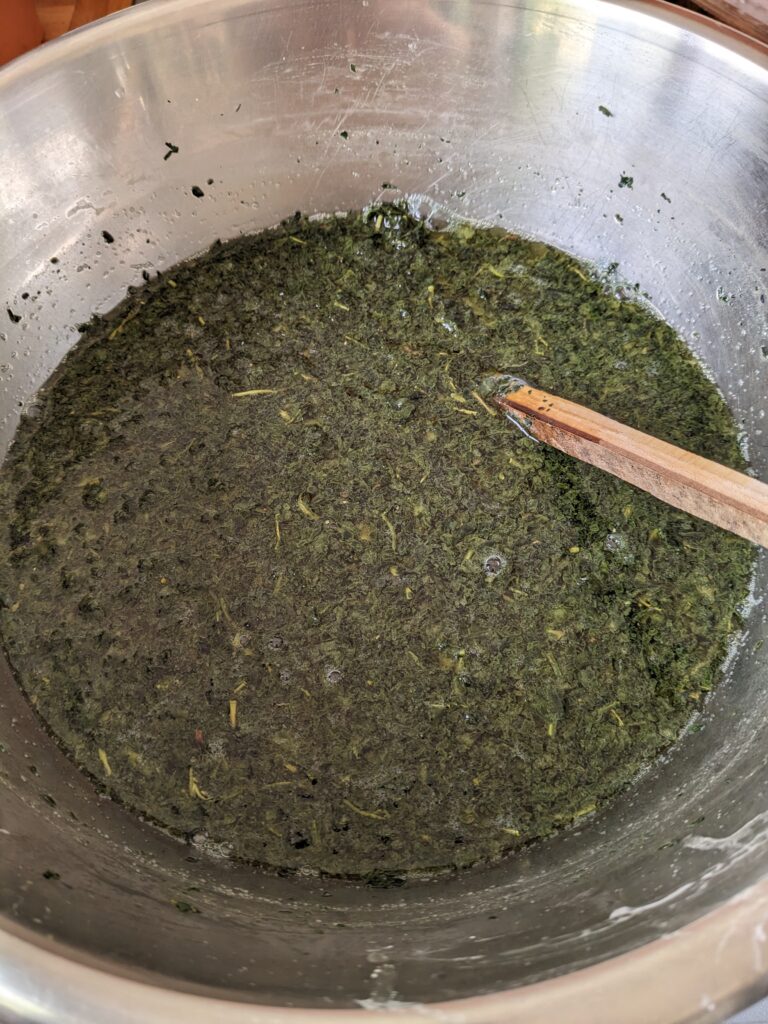
I started by heating the leaves in a solution of calcium hydroxide (lime) until they were fully saturated. This is where I made a fundamental mistake. I ‘should’ have whetted them out in a solution of soda ash (Sodium carbonate), and THEN added a touch of lime. Apparently both chemicals are needed to break down the leaves and release the indigo. I missed this important point in the video.
Hence, when I continued and added the fructose to reduce the solution and make the indigo soluble……….not an awful lot happened.
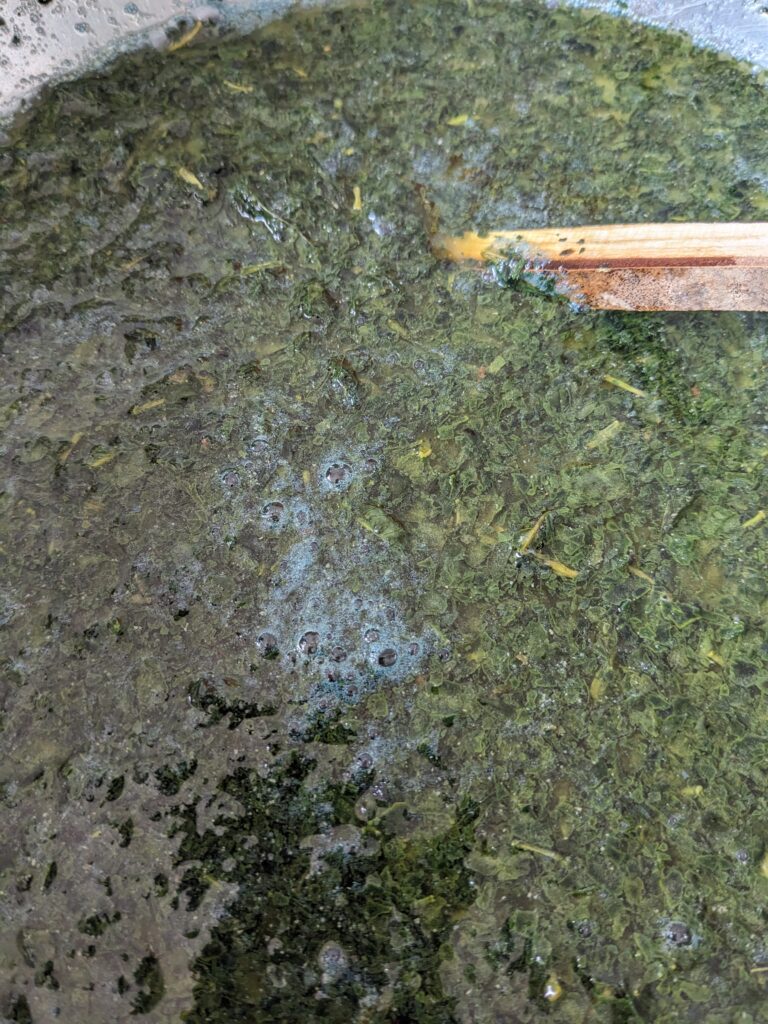
Things looked promising to start with as a small amount of blue bubbles appeared on the surface.
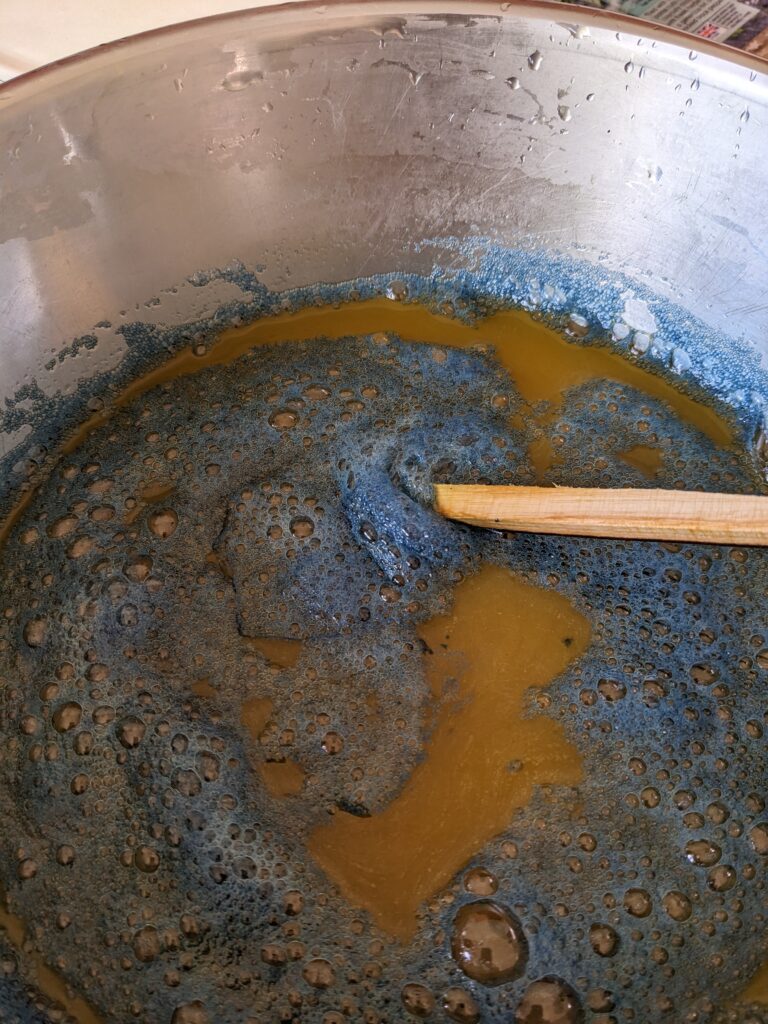
I removed the leaves and reheated the vat and it looked even more promising. I put in some previously tannin mordanted wool and left it for five minutes. I don’t actually have a picture, but it came out green…..and stayed green. Not the desired effect at all. I tried again, and again. Went back to the drawing board, which is when I found out about the soda ash. I put some into the pot, even though by this time I had removed the leaves so it would probably have little effect. I was right……still green. I checked the pH which should be a little on the high side but at least between 10 and 12; all good there. More fructose; maybe it wasn’t reduced enough?
This toing and froing went on for three days. I just couldn’t make out why it wasn’t working. I even boiled up some out of date dates to make extra fructose syrup and added a huge amount of it. Nothing. When removing the wool from the vat it just wasn’t oxidising and turning blue.
In desperation I added all of my saved indigo powder from the indigo plants and my woad (about 20 grams) thinking that there just maybe wasn’t enough indigo in there in the first place! Now I HAD to make this work as there was a lot of time and precious indigo in that vat and I didn’t want to waste it. I stirred and heated, and rested that vat….I even spoke to it! Nothing. Okay; I knew there was enough indigo in there even for a pale colour, it had lots of fructose and the colour was okay, the pH was now dropping so it was reducing but obviously not enough. Going for broke, I reverted to harsh chemicals and added some Thiourea dioxide. If this vat wasn’t reduced enough it was the only way for me to test it. By this time I had lost any flower or metallic sheen on the surface of the vat, it seemed dead.
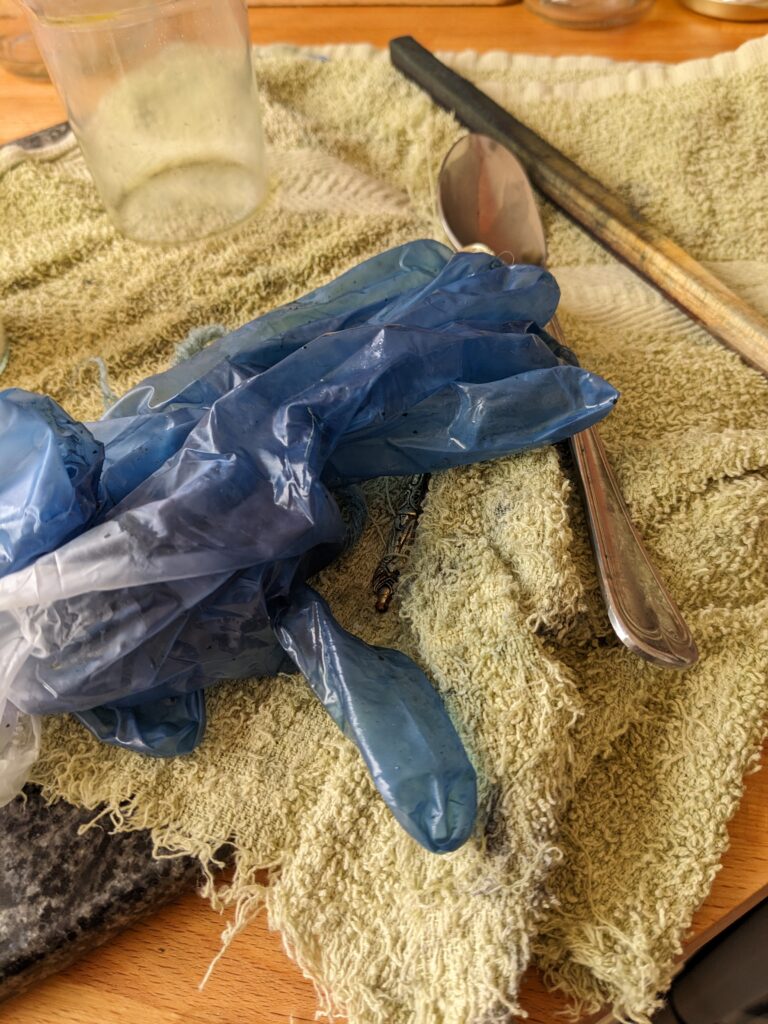
BINGO! The vat started to turn that sickly green that you know is right. My gloves were blue…a very good sign. In went that same skein of wool and when it came out and hit the air it turned that magical blue. Hooray! So, it just wasn’t reduced enough? I will have to try it again to be sure and do it in the correct order, with the correct additives. However, I think I’m just going to continue to extract the pigment from the leaves and save it as a paste instead of a powder. Why? Because the powder just took too long to crush up and get whetted out. Having paste would have been far easier; and as for dried leaves? It seems such an ideal way to go but you can’t knock the tried and tested methods and they do work consistently, so dried leaves may go on the back burner for a while.
As for the results: It’s hard to get good photos indoors and even outdoors sometimes, but after about 4 dips in the vat, I’m happy with the range of blues achieved on both white and beige colour yarn. There’s still life left in the vat so that can sit for a day and I’ll exhaust it tomorrow. For now, I’M the one that’s exhausted! Phew!
